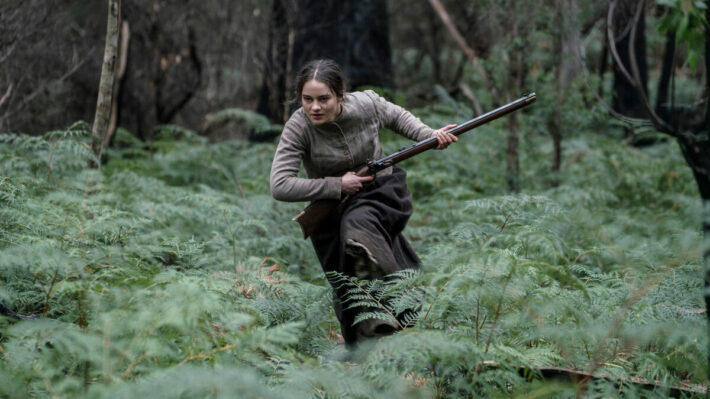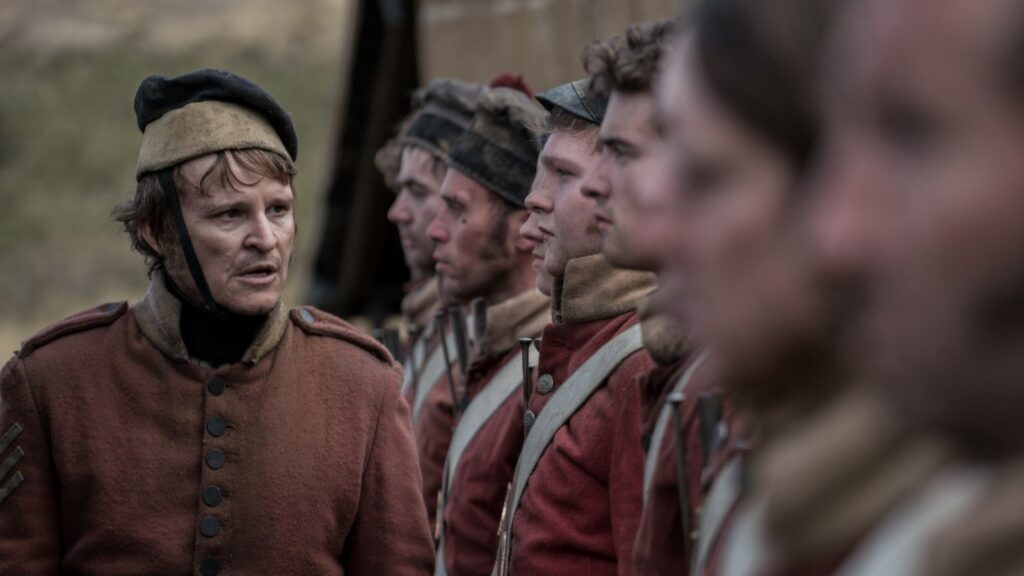The Nightingale is a beautifully crafted masterpiece that tells the story of a young Irish convict, Clare, played stunningly by Aisling Franciosi, seeking revenge against a cruel British officer who wronged her family. Set predominantly in the Tasmanian wilderness, the film is a raw and unrelenting portrayal of the brutality and inhumanity inflicted on indigenous people and women in the 19th century. Director Jennifer Kent (The Nightingale is her follow-up to her instant classic, The Babadook) brilliantly helms the film, bringing in a perspective that’s both thought-provoking and visually arresting. Kent sets the gritty mood of the film within seconds, unveiling the era it is set in, via the opening shot of the Tasmanian landscape, while traditional folk music adds to the film’s traditional setting. The Nightingale takes a thoughtfully measured dive into the past, bringing out the era’s morality—dark and uncontrolled, all at once. It offers an insight—a window—to that inherent sin that prevailed in an environment where cruelty and racism thrived, even as people tried to make a life for themselves.
 The performances of the lead characters are entrancing, making room for nuanced character development amid the unfolding of the plot. Featuring Franciosi and Sam Claflin, the stellar cast is never less than impressive. Claflin’s performance as the malevolent Captain Hawkins is tremendous, while Franciosi portrays a calculated vulnerability, and her character Clare is complicated and demands nuance. The two characters carry the film with their performances, bringing out the harsh truth of human behavior, resulting in a film that both moves and leaves a mark on viewers.
The performances of the lead characters are entrancing, making room for nuanced character development amid the unfolding of the plot. Featuring Franciosi and Sam Claflin, the stellar cast is never less than impressive. Claflin’s performance as the malevolent Captain Hawkins is tremendous, while Franciosi portrays a calculated vulnerability, and her character Clare is complicated and demands nuance. The two characters carry the film with their performances, bringing out the harsh truth of human behavior, resulting in a film that both moves and leaves a mark on viewers.
Visually, The Nightingale is exquisite, with its cinematography that keenly depicts the storytelling, thanks to the vision of the talented Radek Ladczuk. The night scenes, with their flickering light, are a treat to watch, and the camera work puts the viewers right into the midst of the film’s landscape, where the drama unfolds. Additionally, Kent makes use of powerful imagery to depict the characters’ emotions, such as a haunting silhouette behind a cloth, symbolizing the trapped conditions of their lives.
The Nightingale is a film that takes you on an emotional journey, ranging from deep sadness to intense dread, the ending scene brings release, in both a personal and a larger sense. The film is intense, raw, and explicitly graphic at times, which may leave some viewers unsettled and exhausted. However, it serves as a significant reminder of the cruelties that people committed, maybe a reminder of something that we might forget over the passage of time and generations.




